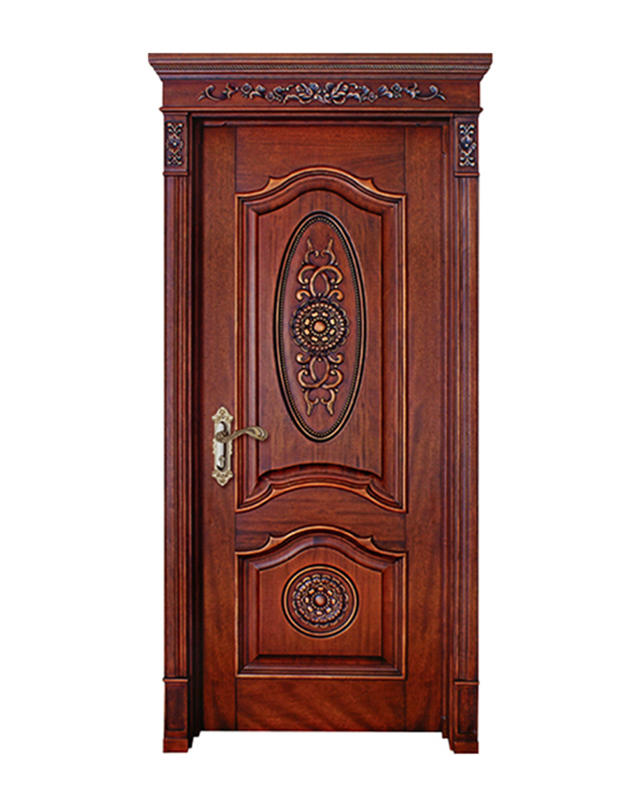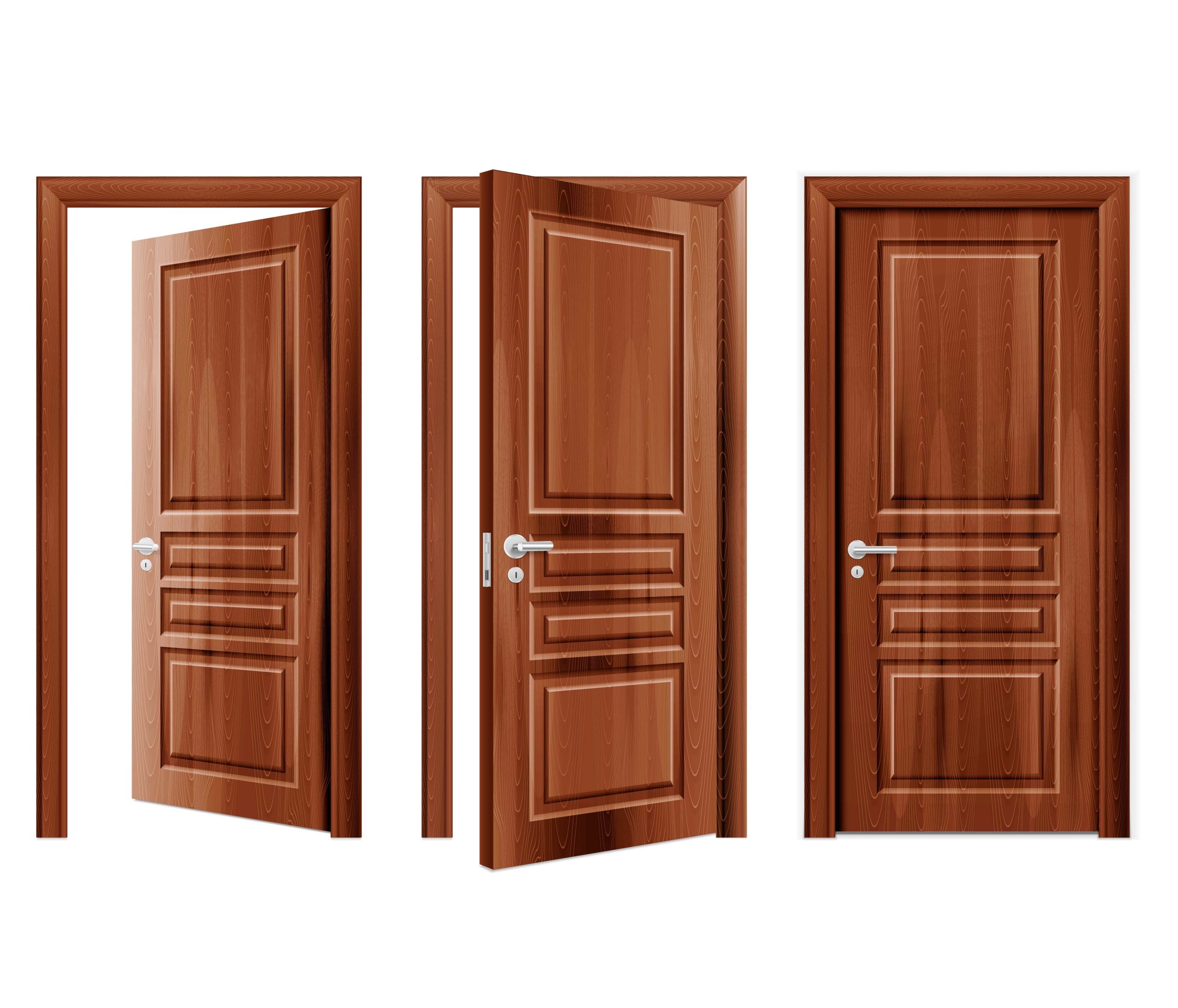For many homeowners, builders, and designers, choosing the right type of Wooden Door is a decision that influences both aesthetics and long-term functionality. At haibodoor.com, which has specialized in door production for over a decade, we see consistent interest from clients wanting to understand the differences between solid wood, engineered options, veneered structures, and composite solutions. Over the years working within a Wooden Door Factory, we have observed how each category performs under real conditions, how material selection affects durability, and how clients can align their choices with specific project goals.
1. Solid Wood Doors: Traditional Craftsmanship and Natural Appeal
Solid wood doors remain a preferred choice for users who value natural texture, organic warmth, and long service life. These doors are crafted from single-species timber—commonly oak, ash, teak, walnut, or pine—each with its own grain pattern, density, and color tone.
Key Characteristics
-
Structural Integrity
Because the panel is carved from real timber, the structure has inherent strength. It feels substantial, responds well to finishing methods, and ages in a way many homeowners appreciate. -
Natural Acoustic Properties
Thick timber tends to absorb sound better than hollow-core constructions. While not identical to dedicated acoustic doors, solid wood panels still offer notable noise control in bedrooms, offices, and private meeting rooms. -
Thermal Comfort
Solid timber naturally moderates temperature transfer. This quality makes such doors suitable for areas requiring stable indoor conditions.
Situations Where Solid Wood Works Well
-
Villa entrances
-
Traditional interior themes
-
High-traffic spaces where longevity is a major consideration
-
Renovation projects aiming for natural textures
Considerations
However, solid wood is sensitive to fluctuations in humidity. Changes in moisture content can cause expansion or contraction, which is why experienced factories focus on kiln drying, moisture control, and proper joint techniques. Homeowners should plan for responsible upkeep—such as light coating maintenance—if their climate varies significantly across the year.
2. Engineered Wood Doors: Stability Through Smart Construction
Engineered wood doors combine natural timber components with structural cores designed for stability. A typical engineered panel contains a robust frame, a stable inner core made from laminated lumber or MDF, and an exterior layer of real wood veneer or another decorative finish.
Engineered designs are a response to the challenges posed by solid timber movement. These doors reduce warping and increase dimensional stability, especially in environments with air-conditioning, heating cycles, or ocean-side humidity.
Advantages
-
Dimensional Reliability
Layered construction resists bending and twisting because the internal grains are arranged to counteract movement. -
Design Adaptability
Engineered structures support a variety of surface finishes—from thin veneers to thicker decorative panels—allowing clients to match color schemes or thematic elements more effectively. -
Cost Efficiency
Since they use real wood only on the visible surface layer, engineered designs achieve a balance between budget and appearance.
Where Engineered Solutions Excel
-
Apartments with climate-controlled interiors
-
Contemporary designs requiring clean lines
-
Projects needing customization without high material cost
-
Commercial settings requiring multiple identical units

3. Veneer Doors: Elegant Appearance with Practical Construction
Veneer doors are closely related to engineered designs but emphasize the visual appeal of natural wood grain. A veneer is a thin slice of real timber applied to a stable substrate. This method provides the look of premium wood while retaining the structural benefits of composite cores.
Distinct Advantages
-
Consistent Appearance
Veneers allow factories to select grain patterns that complement one another, ensuring uniformity across multiple rooms or an entire development project. -
Sustainable Use of Timber Resources
Because veneers use thin layers of premium wood, they reduce waste and support responsible material utilization—an important factor for environmentally conscious builders. -
Smooth, High-Quality Finish
Veneer surfaces accept a wide range of stains and coatings, making them suitable for both modern minimalism and classic decorative themes.
Practical Applications
-
Hotels seeking consistent room aesthetics
-
Residential clients wanting natural grain patterns without solid wood cost
-
Office interiors aiming for a warm yet modern atmosphere
Maintenance Notes
Veneer surfaces should be cleaned with non-abrasive products to preserve the finish. Deep scratches cannot be sanded as aggressively as solid wood, but small imperfections can often be restored with careful touch-ups.
4. Composite Wood Doors: Functional, Versatile, and Cost-Accessible
Composite wood doors combine wood fibers with resins, binders, or PVC-based materials. This category encompasses many variants, including WPC (wood-plastic composite) and molded composite options. Although composite options may not have the same natural appearance as solid or veneered panels, they serve practical functions in environments where moisture, insects, or heavy usage are concerns.
Why Composite Doors Are Popular
-
Moisture Resistance
In bathrooms, laundry areas, or coastal locations, composite panels outperform many other construction types by avoiding swelling or decay. -
Surface Versatility
Composite cores can accept paint, laminated skin, or printed textures. This allows designers to match them with interior themes or maintenance requirements. -
Lightweight Functionality
Some composite designs are lighter than solid wood, making them easier to install in certain building structures.
Common Use Cases
-
Public facilities requiring durability
-
Rental properties needing low-maintenance installations
-
Utility rooms
-
Basements and semi-outdoor spaces
While composite doors may not offer the same tactile feel as solid timber, their functional benefits are significant for certain applications.
5. A Real Case: Selecting the Right Door Type for a Coastal Renovation Project
Several years ago, one of our long-term clients approached us for a renovation project on a coastal property. The building was experiencing seasonal humidity fluctuations, and the original solid timber doors had begun to warp. The homeowner loved the natural look of wood but needed something more stable without losing the warm aesthetic.
Step 1: Environmental Assessment
We examined humidity conditions across different seasons. Indoor areas frequently exceeded 70% relative humidity, while living spaces near open balconies were exposed to salt-laden air.
Step 2: Material Evaluation
We tested several sample constructions and presented the client with three options:
-
A new solid timber panel with improved drying and joint reinforcement
-
An engineered design with a hardwood frame and a multilayer inner core
-
A composite-core panel with natural veneer on the surface
Step 3: Decision and Fabrication
The client ultimately selected the engineered option with a thick natural veneer. This combination provided:
-
A stable inner core resistant to warping
-
A natural-grain appearance matching the home’s existing decor
-
Reduced sensitivity to seasonal moisture swings
The final installation performed reliably across subsequent cycles of humid and cool weather. Follow-up checks two years later confirmed no cracking, swelling, or visible deformation.
This case illustrates how selecting the correct door type based on environmental demands can prevent premature wear and ensure long-term performance.
6. How to Evaluate Which Wooden Door Type Fits Your Needs
Choosing the right material is easier when you focus on four practical factors: location, budget, durability expectations, and maintenance plans.
Factor 1: Where the Door Will Be Installed
-
Bedrooms, studies, and private areas often benefit from solid or engineered structures due to acoustic comfort.
-
Bathrooms, kitchens, basements, or utility spaces require moisture-resistant designs such as composite options.
-
Main entrances may favor solid structures for density and impact resistance.
Factor 2: Budget and Long-Term Value
-
Veneer and engineered designs strike a balance between cost and natural appearance.
-
Solid wood often has higher upfront cost but can last a long time with proper care.
-
Composite designs maintain cost efficiency and reduce maintenance demands.
Factor 3: Aesthetic Preferences
-
Solid and veneer surfaces work well for natural grain lovers.
-
Composite designs allow creative finishes, including printed or laminated surfaces.
Factor 4: Maintenance Willingness
-
Solid wood requires occasional refinishing.
-
Veneer needs gentle cleaning and surface protection.
-
Composite requires minimal upkeep.

7. Actionable Advice When Selecting a Wooden Door
To help you make a well-informed decision for your project, here are specific steps you can apply immediately:
1. Request Material Samples
Touching and comparing surface samples allows you to understand texture, coating quality, and color tone before finalizing your order.
2. Verify Moisture Content and Construction Method
Ensure the material used—especially for solid or engineered structures—meets controlled moisture standards. Ask the supplier about:
-
Kiln-drying process
-
Core structure
-
Joint reinforcement methods
3. Consider the Local Climate
If your local environment experiences temperature or humidity swings, engineered or composite designs may offer better stability.
4. Align Door Selection With Room Function
Match the door type to the room rather than choosing one material for the entire property.
5. Ask About After-Sales Support
A reliable manufacturer should guide you on installation techniques, hardware compatibility, and maintenance routines suited to the chosen material.

 English
English русский
русский Français
Français Español
Español bahasa Indonesia
bahasa Indonesia عربى
عربى



